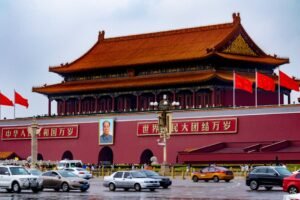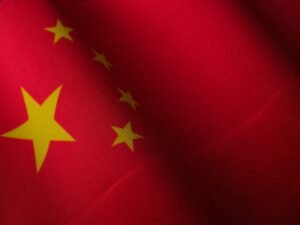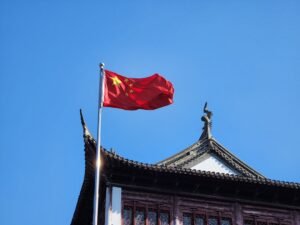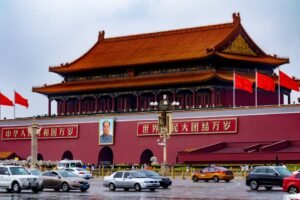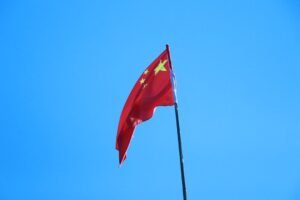Table of Contents
ToggleIntroduction
The Chinese language is a fascinating and challenging subject, with a history that goes back thousands of years and dialects that reflect a considerable degree of geographical diversity. The history and evolution of the Chinese language will be extensively covered in this article, along with regional and vernacular variants and the difficulties of linguistic standardization.
The Origins of the Chinese Language
Classical Chinese(文言文Wényánwén)
Classical Chinese, often known as “literary Chinese,” is the earliest form of written Chinese. From the earliest records of Chinese civilization until the early 20th century, it was utilized for administrative and literary objectives. The language and vocabulary of classical Chinese are considerably dissimilar from those of modern Chinese, making it challenging for speakers of today to understand without specialized study.
Old, Middle, and Modern Chinese
Old, Middle, and Modern Chinese are the three main epochs in the development of spoken Chinese. Old Chinese, which was spoken between 1200 and 600 BCE, is the oldest type of Chinese. The Middle Chinese language, which was used between 600 and 1600 CE, underwent significant phonological and grammatical changes. Modern Chinese, spoken since 1600 BCE, has gradually simplified its phonology and grammar.
Dialects and Regional Variations
Mandarin
About 70% of Chinese people speak Mandarin, the largest and most popular group of Chinese dialects. Putonghua (普通话, Pǔtōnghuà), often known as Standard Mandarin, is another name for the official tongue of China.
Wu (吴语, Wúyǔ)
A collection of dialects known as Wu(吴语, Wúyǔ) are primarily spoken in the provinces of Jiangsu and Zhejiang. With about 80 million speakers, it is the second most widely spoken dialect group after Mandarin.
Typically spoken in the city of Shanghai, Shanghainese(上海话, Shànghǎihuà) is a typical dialect of the Wu group. It is renowned for having distinctive pronunciation and vocabulary that are very different from Standard Mandarin’s.
Cantonese (粤语, Yuèyǔ)
With almost 60 million speakers, Cantonese(粤语, Yuèyǔ) is a significant dialect family spoken in Guangdong, Hong Kong, and Macau. It has a long history in popular music, movies, and television and is well known for its distinctive tones and distinctive vocabulary.
Min (闽语, Mǐnyǔ)
Overseas Chinese communities mostly speak a set of dialects known as Min in the province of Fujian, Taiwan, and Southeast Asia. There are various subgroups within it, including Teochew and Hokkien.
- Hokkien (福建话, Fújiànhuà)
Taiwan, the Fujian Province, and the expatriate Chinese populations of Southeast Asia speak Hokkien. Its vocabulary and grammar are entirely distinct from those of Standard Mandarin.
- Teochew (潮州话, Cháozhōuhuà)
Teochew speakers live in the Chaoshan area of eastern Guangdong Province, and they are distinctive in their pronunciation and vocabulary.
Hakka (客家话, Kèjiāhuà)
The Hakka people, who are mostly located in Guangdong, Fujian, and Taiwan, as well as in different overseas Chinese communities, speak Hakka(客家话, Kèjiāhuà). It is distinguished from other dialects by its distinctive pronunciation and lexicon.
Gan (赣语, Gànyǔ)
An estimated 22 million people speak the Gan(赣语, Gànyǔ) dialect group, which is mostly spoken in Jiangxi Province. It stands out from other dialects thanks to its distinctive pronunciation and grammar.
Xiang (湘语, Xiāngyǔ)
Xiang’s language(湘语, Xiāngyǔ), primarily spoken in Hunan Province, is distinguished by its unusual vocabulary and grammar.
Hui (徽语, Huīyǔ)
A collection of dialects known as Hui(徽语, Huīyǔ) are spoken in the province of Anhui. Its distinctive tonal and phonetic traits stand out from other dialects.

The Role of Dialects in Modern China
Dialects are essential for maintaining regional cultures and identities in contemporary China.
However, dialects are still used in households, rural areas, and among intimate friends and family members, even though the government advocates using Standard Mandarin to foster national cohesion and communication. Many Chinese people speak their regional dialect and Standard Mandarin, making them multilingual or bilingual.
Challenges in Language Standardization
In China, efforts to standardize the language have been successful but have faced obstacles. One issue is the country’s enormous language diversity, which can cause misunderstandings and communication hurdles. Furthermore, promoting Standard Mandarin can result in declining regional languages and cultural variety.
Some local governments and communities have taken measures to conserve and promote their regional languages, such as providing dialect classes in schools or creating television programs in regional dialects. However, striking the right balance between maintaining regional uniqueness and fostering national unity through a common language remains challenging.
The Future of Chinese Language Diversity
Some local governments and communities have taken measures to conserve and promote their regional languages to preserve these dialects, such as providing dialect classes in schools or creating television programs in regional dialects. However, striking the right balance between maintaining regional uniqueness and fostering national unity through a common language remains challenging.
English and other foreign languages may impact the Chinese language as China grows more interconnected with the rest of the world, resulting in new vocabulary and linguistic traits. Regional dialects may also survive because of the younger generation’s desire to maintain their history.
Conclusion
Chinese has a long history and a wide range of regional dialects that reflect the country’s diverse cultural terrain. The preservation of distinctive dialects is essential to preserve China’s linguistic and cultural history, even though the standardization of Mandarin has eased communication and national unity. Internal and external factors will likely impact how China’s language develops as it interacts with the outside world and continues to change. The diversity of the Chinese language is still an intriguing and challenging topic.
FAQs
What is the difference between dialects and regional variations in the Chinese language? Language varieties known as dialects vary in grammar, vocabulary, and pronunciation. Regional variants, on the other hand, refer to more subtle variances within a dialect that may exist between several cities or provinces.
Why is Standard Mandarin the official language of China?
Standard Mandarin, based on the Beijing dialect, was selected as the nation’s official tongue to foster unity among its numerous ethnic groups and to make communication easier.
How many people speak Chinese dialects other than Standard Mandarin?
Millions of people speak major dialect groupings like Wu, Cantonese, and Min in China, where it is believed that 30% of the country’s population speaks dialects other than Standard Mandarin.
Are Chinese dialects mutually intelligible?
Chinese speakers who frequently speak different dialects can only comprehend one another after first understanding the other lingo because most Chinese dialects are not mutually intelligible.
Is it possible to learn and understand multiple Chinese dialects?
Yes, many Chinese people speak both Standard Mandarin and their regional dialect, and occasionally even other dialects.
Click here to REGISTER for our SUMMER CAMP in 2023!
Learn about our Internship Program in China.
Learn about holidays in China in 2023.
Get free Chinese learning resources.
Read about the Spring Festival Celebration on NRK’s website: https://www.nrk.no/norge/harens-ar-1.16270652#top.



